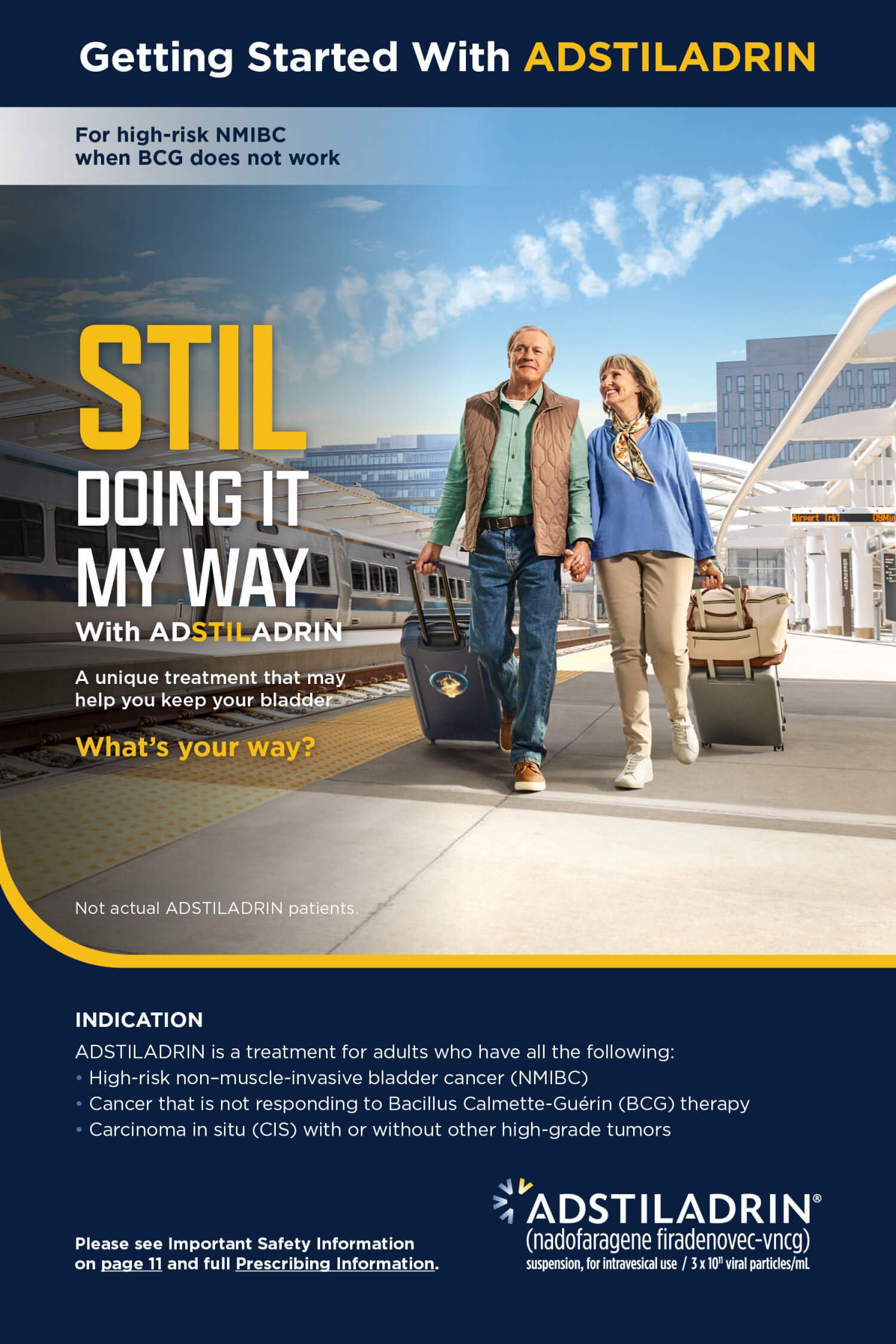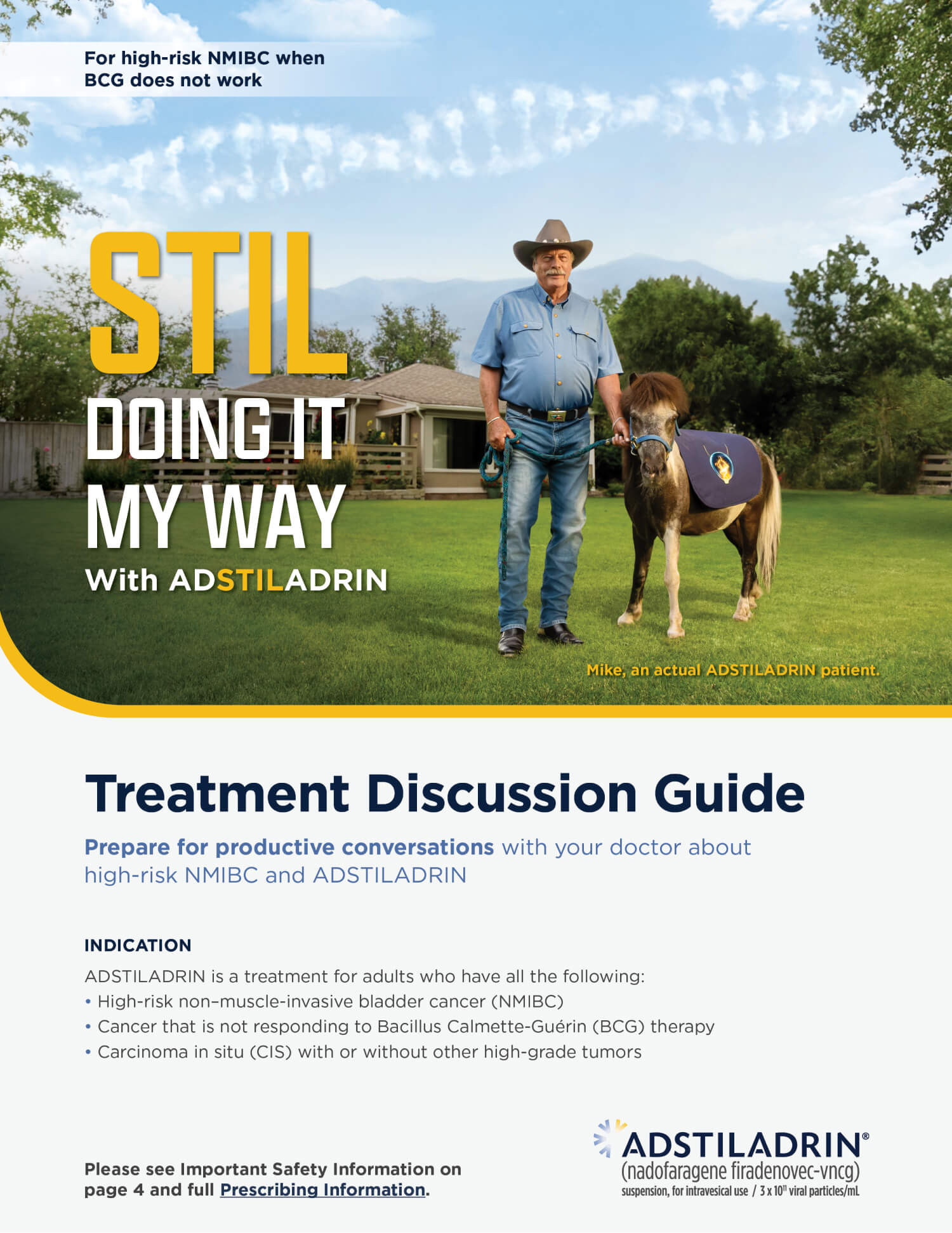INDICATION
ADSTILADRIN is a treatment for adults who have all the following:
- High-risk non–muscle-invasive bladder cancer (NMIBC)
- Cancer that is not responding to Bacillus Calmette-Guérin (BCG) therapy
- Carcinoma in situ (CIS) with or without other high-grade tumors
IMPORTANT SAFETY INFORMATION
Who should not receive ADSTILADRIN?
Do not receive ADSTILADRIN if you have a sensitivity to interferon alfa or any of its components.
What is the most important information I should know about ADSTILADRIN?
Individuals who are immunosuppressed or immune-deficient should not prepare, administer, receive or come into contact with ADSTILADRIN.
What should I tell my healthcare provider?
Tell your doctor about all the medicines you take, including prescription and over-the-counter medicines, vitamins, and herbal supplements.
What are the possible side effects of ADSTILADRIN?
The most common side effects of ADSTILADRIN include:
Urinary discharge, fatigue, bladder spasm, urgency to urinate, and blood in your urine.
These are not all the possible side effects of ADSTILADRIN. Call your doctor for medical advice about side effects. You are encouraged to report negative side effects of prescription drugs to FDA. Visit www.FDA.gov/medwatch or call 1-800-332-10881-800-332-1088. You may also contact Ferring Pharmaceuticals at 1-888-FERRING1-888-FERRING.
What other information should I know about using ADSTILADRIN?
For 2 days following treatment, voided urine should be disinfected for 15 minutes with an equal volume of bleach before flushing.
For more important information, call 1-888-337-74641-888-337-7464.
Please see full Prescribing Information.



